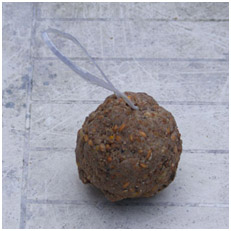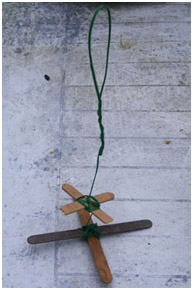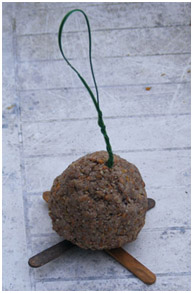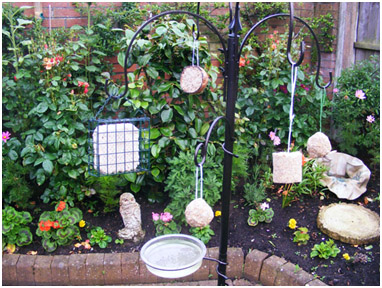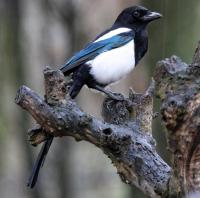- Home
- FAQs
- Customer Video Gallery
- Customer Photo Gallery
- Bird Facts
- Bird Food Blog
- Bird Information
- Feeding Advice
- Small Animal Information
- A to Z of Guinea Pigs
- A to Z of Hamsters
- A to Z of Rabbits
- Basic Care for Guinea Pigs
- Basic Care for Hamsters
- Basic Care for Rabbits
- Basic care for Chinchillas
- Basic care for Ferrets
- Basic care for Gerbils
- Basic care for Mice
- Basic care for Rats
- Buying a Healthy Small Animal
- Does your Reptile need a Licence
- Equipment for Ferrets
- Equipment for Hamsters
- Equipment for Mice
- Equipment for your Chinchilla
- Equipment for your Gerbil
- Equipment for your Guinea Pig
- Equipment for your Rabbit
- Keeping a House Rabbit
- Dog Information
- Cat Information
- Customer Information
- Fat Balls
- Suet Pellets
- Straights
- Seed Mixes
- Suet Treats
- Mealworms
- Bird Feeders
- My Account
How To Make Fat Balls
Fat balls offer a wide range of wild birds a nutritious and important source of energy during difficult times such as cold winters but can also be helpful during the breeding and moulting seasons of Spring and Summer when birds use a great deal of energy raising young and replacing damaged or worn out feathers.
Many people are familiar with shop bought wild bird fat balls, approximately 5cm balls of fat and mixed seeds often contained in a fine mesh net although it is recommended that this netting is removed and wild bird fat balls hung in a special wire fat ball feeder. However, fat balls and fat cakes are simple to make at home from lard or suet mixed with kitchen scraps, raisins or other small fruits, wild bird seed mixes, dried mealworms and even peanut butter.
Once the ingredients are blended together the resultant mix can be formed into balls by hand or used to fill any kind of small container such as yoghurt or jelly pots, vegetable trays, small plant pots, coconut shells and even in holes drilled into logs or sections of branch.
The ratio of ingredients can vary depending on the types used but should typically be somewhere around 1 part fat to 1 part dry ingredients to 1 part fat 2 parts dry ingredients, try a little experimentation to get the best results.
Melt the lard or suet either directly in the saucepan or in the empty food can placed in a saucepan of hot water. Whilst your fat is melting you might take the time to prepare your chosen containers, making hanging loops from string, making perches from sticks or twigs, but do keep an eye on the fat and take care not to burn it, otherwise it won’t reset, remember we only need to soften it enough for mixing, we’re not making chips!
If you intend to mix by hand allow the fat to cool enough so it can be handled safely.
Place your chosen dry ingredients into the mixing bowl, there is no set recipe here just go with the flow and whatever ingredients you have chosen, and add the softened fat in the proportions suggested above and mix thoroughly, you may find mixing by hand best suited to this task, but don't forget the gloves!
Before the mix hardens you need to transfer it to your chosen containers or twigs. In this example we will use a small yoghurt pot. Make a loop of string and place it in the pot with the knot at the bottom.
If not already there, drill a hole in the coconut to thread a loop of string through and fill the shell with your fat ball mix, allow to cool, using one of the methods described earlier and then store in a cool place or hang in your garden as required.
A couple of other simple ways to provide this fat ball treat for your birds is to make your own hanger.
The simplest method is to form a ball of your mix around a loop of string and cool.
Alternatively using either lollipop sticks or twigs make a large cross and using some wire or string tie them where they cross leaving a long piece of wire or string for the next bit. About 1-1&1/2 inches, or 25-40cm, above the first cross make a smaller cross using half lengths of lollipop sticks or twigs and tie together using the wire or string leaving enough to attach the hanger to a branch or feeding station. Form a ball of your fat ball mix around the smaller cross, this helps keep the mix in place leaving the larger one free of mix, this is for the birds to perch on whilst they feed on your fat ball treat. Allow to cool and then hang in your preferred place and watch the birds enjoy the fruits of your labours.
Many people are familiar with shop bought wild bird fat balls, approximately 5cm balls of fat and mixed seeds often contained in a fine mesh net although it is recommended that this netting is removed and wild bird fat balls hung in a special wire fat ball feeder. However, fat balls and fat cakes are simple to make at home from lard or suet mixed with kitchen scraps, raisins or other small fruits, wild bird seed mixes, dried mealworms and even peanut butter.
Once the ingredients are blended together the resultant mix can be formed into balls by hand or used to fill any kind of small container such as yoghurt or jelly pots, vegetable trays, small plant pots, coconut shells and even in holes drilled into logs or sections of branch.
Typical ingredients
- Solid Fat - Lard or Suet is best, avoid turkey or chicken fats, these can clog up birds feathers. Also unsuitable are oil, butter.
- Bird Seed - any shop bought seed mix is suitable
- Porridge Oats - no need to spend big here, budget oats are a big hit with wild birds
- Peanuts or other nuts - best broken or chopped, especially during the breeding season and take great care to avoid salted nuts
- Raisins - best soaked overnight to plump them up
- Dried Mealworms - these are quite expensive so use sparingly, again soaked overnight plumps them up a treat.
- Kitchen scraps - cheese, cake, bacon rinds, bread crumbs, cooked potato, cooked rice, dried or fresh fruits but not dried coconut and nothing salted, wild birds cannot handle either of these.
The ratio of ingredients can vary depending on the types used but should typically be somewhere around 1 part fat to 1 part dry ingredients to 1 part fat 2 parts dry ingredients, try a little experimentation to get the best results.
Mixing Equipment
- Mixing bowl
- Saucepan
- Empty clean food can (optional)
- Mixing spoon
- Clingfilm (optional)
- Bowl of cold water
- Rubber or plastic gloves (optional)
Containers and useful items
- Yoghurt pots
- Vegetable trays
- Coconut shells
- Small plant pot
- String
- Lollipop sticks or twigs
Making your Fat Ball mix
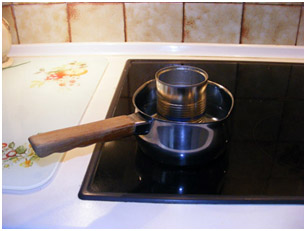
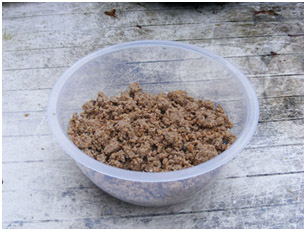
Melt the lard or suet either directly in the saucepan or in the empty food can placed in a saucepan of hot water. Whilst your fat is melting you might take the time to prepare your chosen containers, making hanging loops from string, making perches from sticks or twigs, but do keep an eye on the fat and take care not to burn it, otherwise it won’t reset, remember we only need to soften it enough for mixing, we’re not making chips!
If you intend to mix by hand allow the fat to cool enough so it can be handled safely.
Place your chosen dry ingredients into the mixing bowl, there is no set recipe here just go with the flow and whatever ingredients you have chosen, and add the softened fat in the proportions suggested above and mix thoroughly, you may find mixing by hand best suited to this task, but don't forget the gloves!
Treats for your wild birds
Before the mix hardens you need to transfer it to your chosen containers or twigs. In this example we will use a small yoghurt pot. Make a loop of string and place it in the pot with the knot at the bottom.
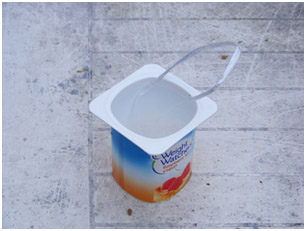
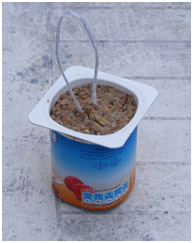
Squash your soft mix around the string making sure that there is enough of the string loop sticking out the top to hang from your chosen hook, feeding station or branch.
Once you have used up your mix and filled all of your containers they will need to be left to cool. This can be just in a cool part of a garage or shed, for instance, or you could place them in a fridge for a while or a simple way is to part fill a bowl with cold water and place the filled pots in the water until hardened.
Take care that the level of water is not too great that your pots flood or float around, we’re not playing battleships here!. Once hardened they can be stored in their containers until needed, in a fridge or cool cupboard, shed or garage. To remove the treats from their pots place a little warm water in a bowl and place the pot in the water just long enough for the fat to soften enough for you to be able to remove it easily from the pot. If you prefer you can use the warm water method above to remove all your treats from their pots, wrap them in clingfilm and store in a food container in the fridge or other suitable cold place until needed.
Another simple way to provide a simple fat ball treat to wild birds includefilling a coconut half with your mix. This will invariably involve you having already bought either a previous fat filled coconut half or a raw coconut for hanging out or eating.
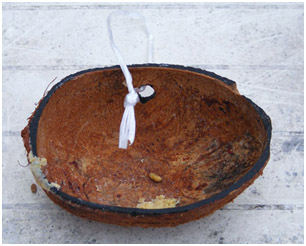
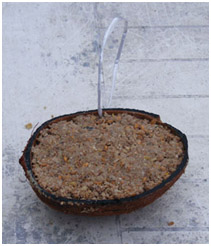
If not already there, drill a hole in the coconut to thread a loop of string through and fill the shell with your fat ball mix, allow to cool, using one of the methods described earlier and then store in a cool place or hang in your garden as required.
A couple of other simple ways to provide this fat ball treat for your birds is to make your own hanger.
The simplest method is to form a ball of your mix around a loop of string and cool.
Alternatively using either lollipop sticks or twigs make a large cross and using some wire or string tie them where they cross leaving a long piece of wire or string for the next bit. About 1-1&1/2 inches, or 25-40cm, above the first cross make a smaller cross using half lengths of lollipop sticks or twigs and tie together using the wire or string leaving enough to attach the hanger to a branch or feeding station. Form a ball of your fat ball mix around the smaller cross, this helps keep the mix in place leaving the larger one free of mix, this is for the birds to perch on whilst they feed on your fat ball treat. Allow to cool and then hang in your preferred place and watch the birds enjoy the fruits of your labours.
